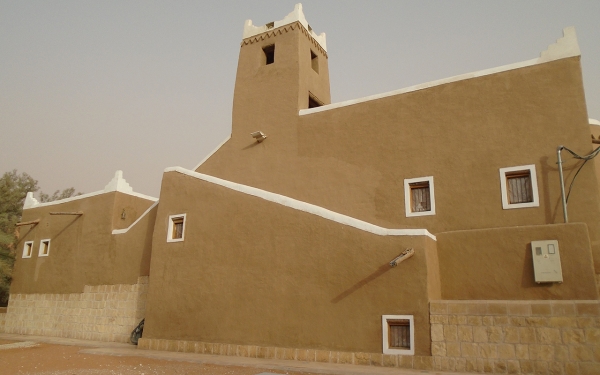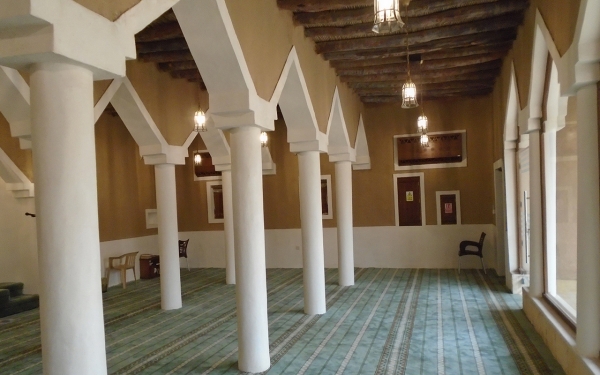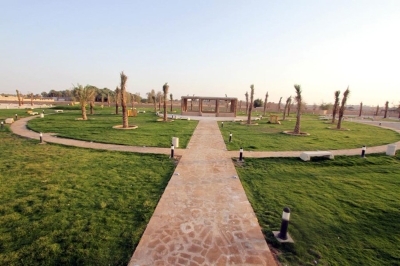

Al-Mansaf Mosque is one of the historic mosques in the Kingdom of Saudi Arabia, dating back to the late nineteenth century. It was built in 1873 in the traditional Najdi style. Despite its age, it remains active with worshippers and was included in the first phase of the Mohammed Bin Salman Project for the Development of Historical Mosques.
Location of al-Mansaf Mosque
The mosque is located in the old village of al-Mansaf, northwest of al-Zulfi City affiliated with Riyadh Province, approximately thirty-eight km away. It is situated 272 km north of Riyadh City and features traditional Najdi designs.
Construction of al-Mansaf Mosque
Al-Mansaf Mosque was constructed using clay bricks and cement. Its roof was built using palm fronds and tamarisk tree trunks.
The construction of the mosque coincided with the founding of the village of al-Mansaf. It served as an educational school for the villagers and surrounding communities. Sheikh Jasser Bin Mohammed al-Jasser initially taught there, followed by Abdulrahman al-Jasser and Ahmed Bin Abdulaziz al-Habees.
The development of al-Mansaf Mosque
Al-Mansaf Mosque was one of the mosques targeted for development in the first phase of the Mohammed Bin Salman Project for the Development of Historical Mosques, launched by Crown Prince and Prime Minister, His Royal Highness Prince Mohammed Bin Salman Bin Abdulaziz, in 2018.
The mosque originally had a total area of approximately 337 m² and could accommodate about eighty-seven worshippers. It consisted of the mosque house, a prayer area, an open courtyard, and an underground retreat, as well as separate restrooms. The mosque had two main entrances, both located on the southern facade. After the development, the mosque now includes a prayer hall, an open courtyard, a women's prayer area, restrooms, ablution facilities for both men and women, and a storage room. Its capacity has increased to 150 worshippers.
Related quizzes
Related articles

